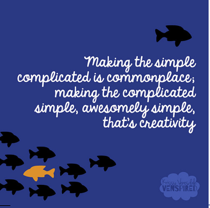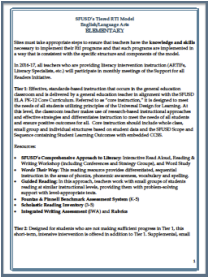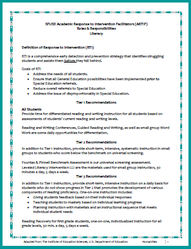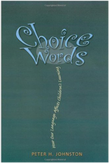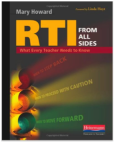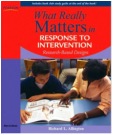Elementary Response to Intervention (RtI)
It will never rain roses: when we want to have more roses we must plant more roses.
–George Eliot, 19th century British author
–George Eliot, 19th century British author
|
Sites must take appropriate steps to ensure that teachers have the knowledge and skills necessary to implement their RtI programs and that such programs are implemented in a way that is consistent with the specific structure and components of the model.
In 2016-17, all teachers who are providing literacy intervention instruction (ARTIFs, Literacy Specialists, etc.) will participate in monthly meetings of the Support for all Readers Initiative. Learn more about SFUSD’s English Language Arts Tiered RtI Model for Elementary. |
Humanities’ Recommended Reading:
Additional Resources:

"Reading to children has been repeatedly shown to improve their reading, writing and communication skills, logical thinking, concentration and general academic aptitude… as well as inspire a love of reading. The SAG-AFTRA Foundation’s children’s literacy website, Storyline Online, streams imaginatively produced videos featuring celebrated actors including Kevin Costner, Rita Moreno, Annette Bening, James Earl Jones, Elijah Wood, Hector Elizondo, and Betty White reading children’s books alongside creatively produced illustrations, helping to inspire a love of reading in children.
For each book, supplemental curriculum developed by a literacy specialist is provided, aiming to strengthen comprehension and verbal and written skills for English-language learners worldwide." - About Storyline Online, accessed May 19, 2017
For each book, supplemental curriculum developed by a literacy specialist is provided, aiming to strengthen comprehension and verbal and written skills for English-language learners worldwide." - About Storyline Online, accessed May 19, 2017


